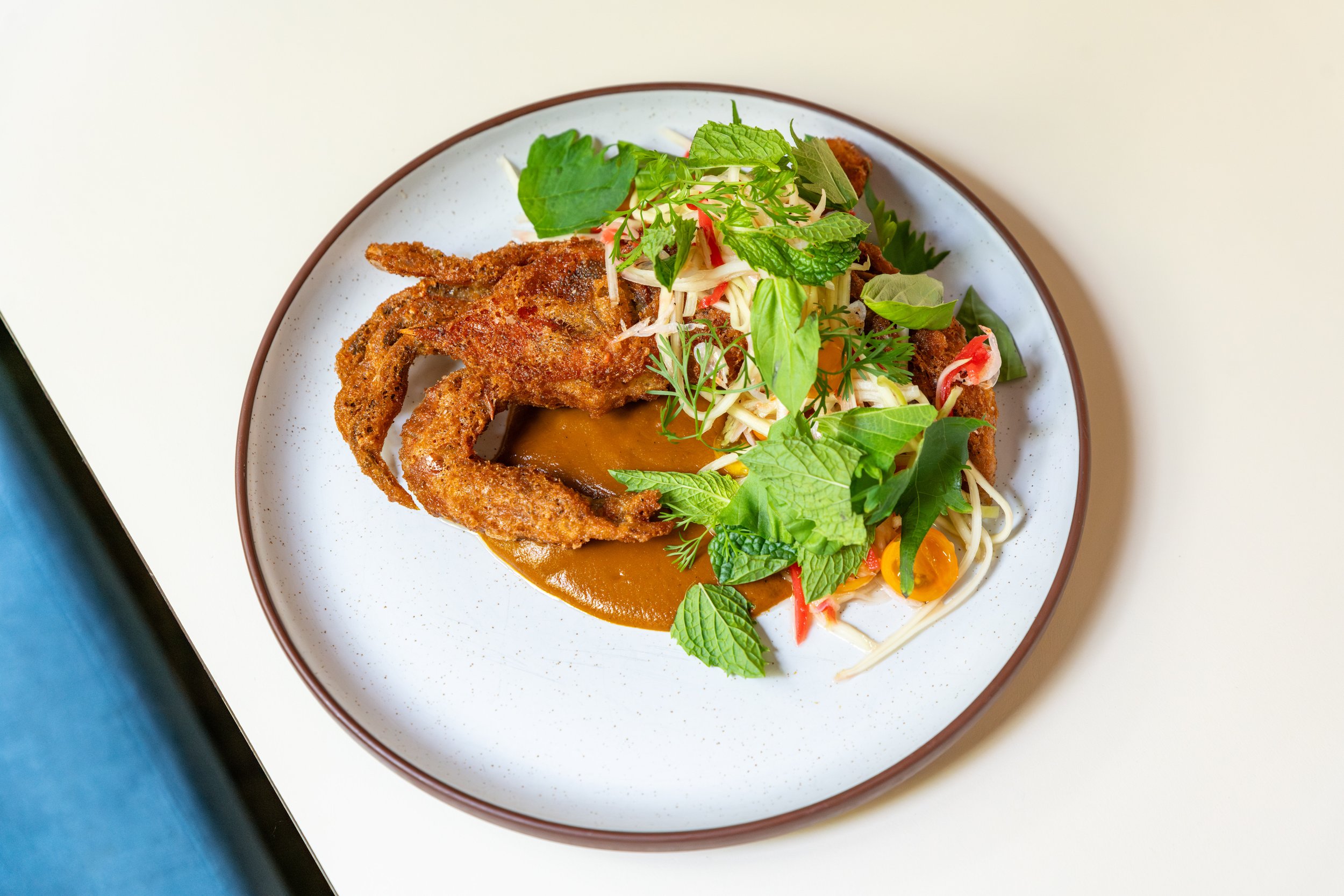On The Plate: Monkfish Liver Custard
Breaking down Chef Daniel Garwood’s luxurious and surprising seafood dish at Acru
Photos: Alexander Zeren
At the West Village’s Acru, the menu is not only a reflection of Chef-Partner Daniel Garwood’s Australian roots and Korean culinary chops, it’s also a playground for the chef to experiment with ingredients and surprise his diners’ tastebuds.
One way to incorporate even more gastronomic intrigue into the menu was through his monkfish liver custard. The dish, the third course of the restaurant’s fall tasting menu, was “one of the more polarizing” items, says Garwood. “If you know a bit about cooking, you’re like, wow. You can see all the techniques. But, for the less experienced diners, a lot of people don’t get it. It’s a good dish to have.”
Monkfish Liver Custard
“Originally, I wanted to use the [monkfish liver] in a couple of ways,” says Garwood. “The idea was to present some form of luxury in an affordable and accessible way.” He eventually landed on a simple chawanmushi-esque custard that allows the rich fish liver to shine. After bringing milk and heavy cream to a steam, Garwood blends it together with egg yolks, salt, sugar, and cooked monkfish liver. The velvety steamed custard acts as a nuanced and understated canvas for the other components.
Fermented Carrot Hot Sauce
Although the monkfish liver custard may be the foundation of the dish, it's the fermented carrot hot sauce that steals the show in Garwood’s eyes. “The sauce is the most important part to me.” Inspired by a classic American hot sauce, Garwood leans on staple Asian ingredients for his version. He fries red Napa cabbage kimchi and XO sauce in oil until the liquid takes on a dark red color. He then adds fresh carrot juice and a fermented carrot juice that he lets sit for two to three weeks until the flavor is just right. “[The juice is] fresh and acidic, but you can still taste the carrots on the back end.” The solids are strained out and the leftover liquids are then blitzed with a butternut squash purée, garlic purée, kelp vinegar, and doenjang for more depth, acidity, and heat. “The making of the hot sauce is so labor-intensive. It’s a good way to teach the team that every stage is important.” The finished sauce is kept warm and poured over the dish tableside.
Chef Daniel Garwood
Squid Bolognese
Left with the excess cooked kimchi and XO sauce solids from the hot sauce, Garwood couldn't help but wonder “what would happen if I cooked them back down and intensified the flavor?” After sautéing the leftover solids with chiles, onions, ginger, and garlic, Garwood adds Sherry, a dark chicken stock, and even more of the fermented hot sauce. The aromatic, umami-packed broth is reduced, bumped up with more stock and hot sauce, and then reduced once more. “We had really nice squid from Montauk at the time, and I thought it would go well together.” The experiment was a success. Garwood freezes and thinly slices the squid before incorporating it into the bolognese, sautéing it until tender. “They’re like squid noodles.”
Carrot “Raisins”
Looking to introduce a grilled element to the set while also backing up the carrot flavor of the hot sauce, Garwood chose to include dehydrated carrot “raisins.” Carrots are grilled until softened before they get dehydrated. They are then slightly rehydrated in brown butter and are tossed in the fermented hot sauce. “It’s chewy and smoky. You get more of an intensified carrot flavor.”
Puffed Grains and Dried Chives
For a final, crunchy component, Garwood cooks, dehydrates, and fries an assortment of local grains. Puffed barley, quinoa, and rye—all sourced from Anson Mills—add texture to the creamy custard. And, the grains make adjusting to a customer’s dietary restrictions a breeze. “It’s an easy swap to remove the barley for gluten-free customers.” Dried chives act as another garnish, bringing a bright, herbal note to balance out the richness of the custard while holding its own against the tangy hot sauce. “When you pour the warm hot sauce over top, it rehydrates [the chives] and adds even more of an aroma.”








